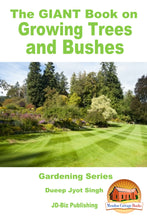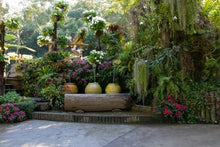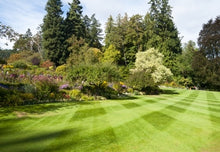
A Giant Book on Growing Trees and Bushes
Introduction
When Mother Nature blessed the new born earth with life forms milleniums ago, the diversity of one celled creatures took up different lines of evolution due to climatic changes and mutations. That is when plant life evolved along with animal life. And that is how the surface of the earth was covered with lush fruitful vegetation, which flourished and evolved in different climates.
As time went by, climatic changes also changed the nature and the appearance of these plants. From multicelled algae and fungi, they became huge multicelled giant trees, like the Sequoia, which are remnants of those glorious days of giant Green trees gone by.
And soon man found out that trees were very useful to give him shelter, to give him food, and to provide him with essential fruit, leaves, and seeds to supplement his diet. That was because he was imitating the animals around him.
They nibbled at leaves, he did the same thing. Sometimes he ended up with a tummy ache. Sometimes the animals ended up sick while he was left hale and hearty. But down the ages, and through lots of trial and error, he found out that every single plant out there could be put into use, even those plants we consider weeds today.
The mythological and historical hanging Gardens of Babylon, which were supposed to have been built by Nebuchadnezzar, but in actuality were built by Sennacherib in Nineveh, Assyria, about 300 km away from Babylon.
These were lush with green trees from all over the world. And historians who are not really bothered about historic authenticity and the names of kings, did not bother much about the locality or the creator of one of the seven wonders of the ancient world.
First-hand accounts of that time were not available, and when Babylon conquered Assyria, they called it the new Babylon. And so centuries later historians wrote about the wonders of marvelous trees and green vegetation, growing in Babylon.
So that is the reason why since ancient times, trees, especially fruit trees have been an important part of cultured and civilized landscaping. They were and are planted in gardens for the pleasure of the general public or for your own private enjoyment.

Table of Contents
- Introduction
- Which Fruit to Grow?
- Fruit Production Charts
- Cold Hardiness zones
- Apples
- Citrus fruits
- Buying the Right Trees and Bushes
- Soil Conditions
- Nitrogen Fixing Crops
- Planning your garden
- Natural Weedkillers
- General Planting
- Supporting Your Fruit Trees
- Bird Protection
- Frost Protection
- Planting Fruit Trees Against Walls
- What Are Espaliers?
- Keeping Your Bushes and Trees Healthy
- Fertilizers and pesticides –
- Cow Manure – the Best Organic Fertilizer/Compost Base
- John Innes Compost
- Basic Healthy Compost Mixtures
- How to Make Leaf Compost
- Natural Pesticides
- Neem Pesticide
- Preparing Neem seeds
- Chilis
- Tobacco
- Bougainvillea Leaves
- Fungicides for Soil
- Onion – Garlic Antifungal Solution
- Papaya Cure –
- Using Cow Manure Ash as a Pesticide
- Nutrient Deficiency Symptoms in Plants
- Spraying
- Garden Pests
- Pollination
- Fruit Plant Propagation
- Harvesting your fruit
- EVERGREENS AND SHRUBS
- Planning Your Garden – Evergreens for Screens
- Evergreens – Planting Tips
- Recognizing the “Right” Evergreen
- Why Would Not I Choose a Conifer
- Tips for Planting Evergreens
- Choice of Evergreens
- Arbutus – The Strawberry Tree –Arbutus menziesii
- Camellia
- Heath Plants – Erica
- Gorse– Ulex
- Bottlebrush – Callistemon
- Magnolias
- Daphne – the Spurge Laurel Family
- Box [Buxus]
- Mimosa
- Lavender – Lavandula
- Holly – [Ilex]
- “Gold” and “Silver” Hollies –
- Rhododendrons
- CONIFERS
- Growing Conifers
- Tips before Choosing Your Conifers
- The Scots Pine [Pinus species]
- Growing a Scots Pine Successfully
- Silver [white] Firs
- The Douglas Fir
- Spruce [Picea]
- Cypress – Cupressus
- Junipers
- Cedars
- Planting Your Conifers
- Conclusion
- Author Bio
- Publisher
Important:
This is for the Digital Book Download only. For the Printed Copy, click HERE






